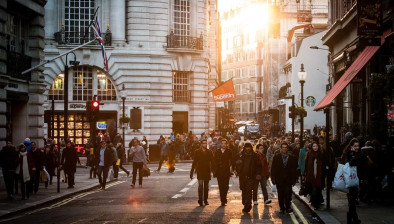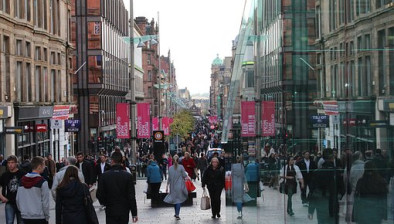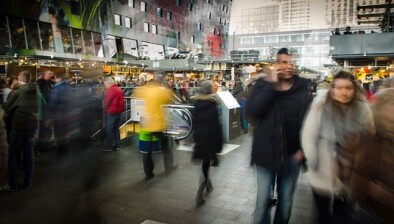SRC & KPMG: Scottish retail sales increased by 15.3% in April

Total retail sales in Scotland increased by 15.3% in April this year compared with April 2021, when they had grown by 107.9%, according to the latest Scottish Retail Consortium (SRC) & KPMG Retail Sales Monitor.
This figure was below both the 3-month and 12-month average increases of 29.4% and 23.1%, respectively.
Scottish sales increased by 12.7% on a Like-for-like basis compared with April last year, when they had increased by 92.1%. This is below both the 3-month and 12-month average increases of 24.5% and 19.3%, respectively.
Total Food sales increased 2.9% versus April 2021, when they had increased by 3.0%. April was above the 3-month average decline of 0.5% and the 12-month average decrease of 0.1%. The 3-month average was above the UK year-on-year decline of 1.3%.
Total Non-Food sales increased by 25.7% in April compared with the same month last year, when they had increased by 195.9%. This was below the 3-month average growth of 54.5% and the 12-month average increase of 42.5%.
Adjusted for the estimated effect of Online sales, Total Non-Food sales increased by 18.8% in April versus April 2021, when they had increased by 204.7%. This is below the 3-month average increase of 38.8% and the 12-month average growth of 34.0%.
David Lonsdale, director, SRC, said: “The value of Scottish retail sales was marginally down in April compared to the same period prior to the pandemic. Whilst the figures lost a little of their lustre from the more buoyant March, retail sales were still at their second highest level for two years and remained close to pre-pandemic levels. That said, the figures were flattered somewhat by rising shop price inflation.
“Several non-food categories such as clothing and accessories, footwear and beauty products turned in a sprightlier performance and edged closer to pre-pandemic levels, lifted by the return to office working, more social occasions such as weddings, and holidaying. Grocery sales got a boost from the timing of Easter and return of family get-togethers, although the recent spurt of growth in this category in the early months of this year cooled off. Sales of bigger ticket items including electricals, household appliances and furniture were lacklustre, as recent spikes in inflation and taxes left pay-packets lighter.”
He added: “The retail recovery is still very much in its infancy and the outlook has to be tempered in light of the pressures on consumer spending. Household finances are under strain as inflation, tax rises and other bills take a bite out of shoppers’ purses and wallets. Disposable incomes simply do not stretch as far as they used to, presenting Scotland’s retailers with a more challenging marketplace.”
Paul Martin, partner, UK head of retail, KPMG, commented: “The cost-of-living crisis came home to roost for Scottish retailers in April, with sales growth stalling after a relatively promising start to the year.
“Pressure on consumers tightened considerably with the increase in energy tariffs and the higher cost of food and other commodities. Easter holiday spending helped food sales grow, and while they are ahead of pre-pandemic levels, are unremarkable when inflation is taken into consideration.
“Against the backdrop of falling consumer confidence and a possible recession ahead, the retail sector faces a bumpy road with cost pressures from all directions.”
He continued: “Many retailers may benefit from pent up demand in the short-term although in the mid-term will have no choice but to raise prices to protect margins.
“But the longer we see high inflation and real household incomes falling, the more likely it is that consumers will change their spending behaviour, prompting a decline in the health of the retail sector and possibly more casualties on the high street.”







